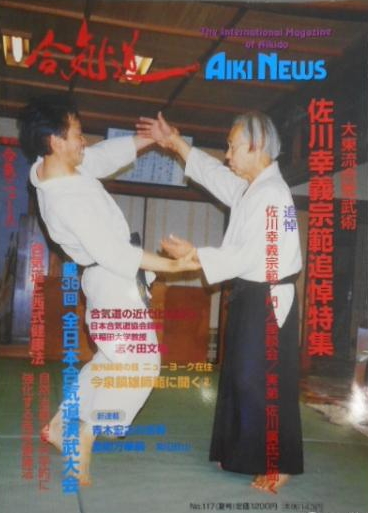 Yukiyoshi Sagawa and Kimura Tatsuo
Yukiyoshi Sagawa and Kimura Tatsuo
on the cover of Aiki News 117 – the Yukiyoshi Sagawa memorial issue
I also applied techniques to Mr. Pranin when he was collecting materials for a memorial issue on Sagawa Shihan for Aiki News 117. His impression at the time was, “When I tested the small, stubborn 50-year-old Kimura Sensei, I was completely controlled by him. I attempted to grab Sensei’s arm many times while seated, but I couldn’t grab him strongly. My power of resistance was neutralized by the use of Sensei’s stance and internal energy. While I was being thrown backward repeatedly I couldn’t tell when the technique was beginning or ending. The energy released from his center was gushing out of his arms. Kimura Sensei clearly demonstrated to us the world of energy that exceeds the physical dimension. This energy did not affect the state of the body and I thought that it was possible to execute highly effective techniques that went beyond the bounds of simple techniques.”
However, then it seems that Mr. Pranin thought that this was merely some form of energy and, given my level at that time, he was not persuaded. On his third visit, he said for the first time that he was truly convinced of Sagawa Sensei’s Aiki.
– Tatsuo Kimura
Discovering Aiki My 20 Years with Yukiyoshi Sagawa Sensei
Yukiyoshi Sagawa was one of the longest students of Daito-ryu Chuku-no-so Sokaku Takeda, who was also the teacher of Aikido Founder Morihei Ueshiba. Not only was he was asked to become the Soke of Daito-ryu by the Takeda family (he eventually refused), but at one time, around 1956, an agreement was made for Sagawa to become an instructor at the Aikikai Hombu Dojo (this, also, he refused eventually).
Yukiyoshi Sagawa’s younger brother and favorite sibling, Hiroshi Sagawa (佐川廣), was born in Shimo-yubetsu Hokkaido in 1909 (Meiji Year 42) into a family in which both his father and his elder brother trained extensively with Sokaku Takeda.
Tatsuo Kimura (木村達雄) is one of three of Yukiyoshi Sagawa Sohan’s students to have completed the 10th Gen level of techniques (the techniques in Sagawa Dojo that Sagawa Sensei learned from Sokaku Takeda were organized into ten levels, or “Gen” / 元).
Born in Tokyo Japan in 1947, Kimura Sensei is a well known mathematician and professor at Tsukuba University. He published two books about Sagawa Sohan (宗範) that have been translated into English (the latter one only partially) – “Transparent Power (透明な力)” and “Discovering Aiki My 20 Years with Yukiyoshi Sagawa Sensei (合気修得への道―佐川幸義先生に就いた二十年)”. He also holds a third-dan in kendo and a fifth-dan in Aikido, which he studied under Seigo Yamaguchi (山口清吾).
This is the fourth and final section of the English translation of an interview conducted in Japanese by Kuni Azumi (安積 邦) with Hiroshi Sagawa and Tatsuo Kimura that previously appeared in the popular martial arts magazine Gekkan Hiden (月刊秘伝 / “Secret Teachings Monthly”) in 2001. You may wish to read Part 1, Part 2 and Part 3 before reading this section.
You may also be interested in another interview with Kimura Sensei that appeared on the Aikido Sangenkai blog previously – “Yukiyoshi Sagawa’s Aiki, a true portrait of Transparent Power – Interview with Tatsuo Kimura, Part 1 and Part 2.
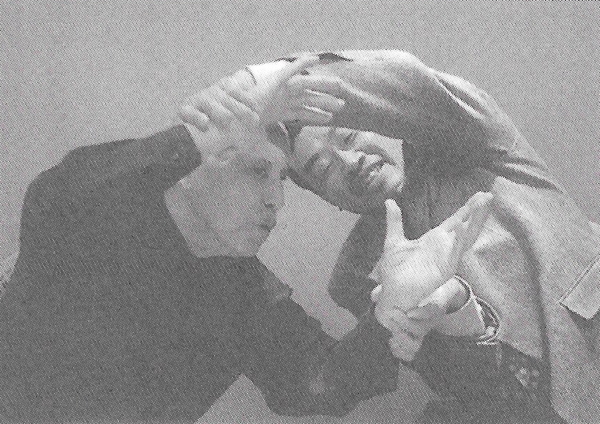 Hiroshi Sagawa and Kimura Tatsuo
Hiroshi Sagawa and Kimura Tatsuo
“I don’t do Daito-ryu” says Hiroshi Sensei. However, when he actually
shows us something he looks pretty good! Pictured here at the age of 91.
Interview with Hiroshi Sagawa and 10th Gen Shihan Tatsuo Kimura, Part 4
Just what was it that happened inside Sagawa Sohan’s body?
Azumi: What would you say?
Kimura: In the end, I think that this is the main point in the refinement of Aiki. Conditioning of the muscles is not the number one goal. I discussed this before, but in his later years Sagawa Sensei, from an ordinary point of view, was certainly physically weak. That’s because he was ninety-five years old. However, while what we would call physical strength had declined in accordance with his years, it is a fact that something had become considerably stronger. Of that alone, there can be no mistake.
Azumi: Something became incredibly strong….?
Kimura: In other words, the interior of his body had become incredibly strong. When a human being becomes ninety-five the exterior of their body doesn’t have much muscle. However, in the case of Sagawa Sensei, there were many times that left me with no choice but to think that something unthinkably huge was inside (his body). Just what was that?
Azumi: ??? What could it have been?
Kimura: When one thinks about it, there is not a single person who has continued to condition themselves to that age. Well, so far as I know.
Azumi: No, even so far as I know there isn’t. (embarrassed smile)
Kimura: When one usually talks about conditioning it is only so far as when one is young, even if one continues for a long time, it’s not so far as ninety-five, is it? (laughing)
Azumi: (laughing) Further, the content of the conditioning was also incredible.
Kimura: That’s why Sensei himself would say “It’s as if I’m using my own body to experiment with”. It seems that there were many phenomena that occurred of which nobody is aware. Even I, who had many chances to be by his side, sometimes felt awe at the potential of human beings.
Azumi: And then he trained until the end of the end….?
Kimura: He continued his conditioning until it was really just before he passed away (I think that one could say, until his dying breath). That practice continued until his last years, overlaid with his innovations. As his legs and hips weakened, he’d grab on to the lintel and try things like kicking, and try to think of methods to be used while seated…. Whatever happened, he never tried to give up his conditioning, and he would invent new methods and try them out as his body declined.
Azumi: Until he was almost one-hundred, over many decades, Sagawa Sohan would teach at his dojo without fail, and would never omit his daily conditioning. Those facts alone are amazing. One view of that that lifetime is “One man, spending their life on an magnificent experiment” – I would really like to know what that body was like. However, those who have previously walked that path are so rare that it is virtually impossible to see how the body and mind of someone who has been through that process has changed.
Kimura: Yes, that’s true, isn’t it? In the case of Sagawa Sensei, if we are talking about that I think there is certainly nobody else like that (laughing). Although his body was said to be declining, there was the phenomenon that occurred in which something was steadily increasing in strength. That’s all that I can think….
Azumi: Whether one believes it or not, if such a thing were true it would be really incredible.
Kimura: It’s the truth. I myself was really astonished. For that reason, even more, that is why I thought at length “Just what is Tanren (“conditioning”)!?!”. That said, it is an interesting discussion. Where was that person called Sagawa Sensei coming from in his thinking? In order to preserve one’s health “Perhaps you should do that this way…” – he would innovate in even the smallest of things.
Azumi: If we are speaking of Sagawa Sensei’s health methods, I would be very interested. What were they, specifically?
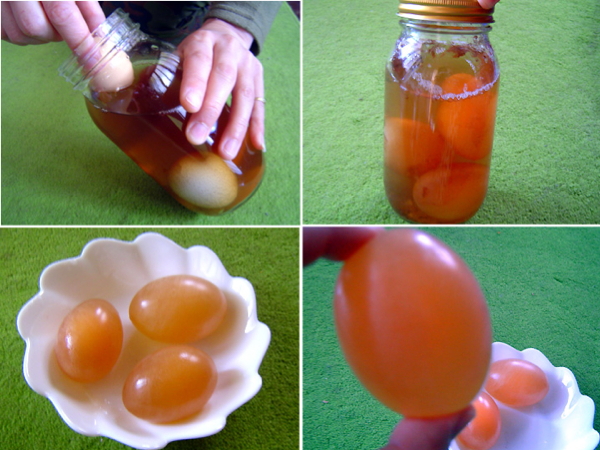 Vinegared Eggs (酢卵)
Vinegared Eggs (酢卵)
Kimura: At one time it was vinegared eggs. I thought they tasted awful and didn’t do it, though. (laughing)
Azumi: Vinegared eggs?
Kimura: Yes. vinegared eggs. At time he’d do it on and off, but he stopped in his final years. (laughing)
Azumi: “Vinegared eggs aren’t useful for Aiki!” (laughing) Now that you mention it, there was a famous story of one time that Sagawa Sohan had a heart problem when he was ninety years old and went to the hospital for a re-examination, he did 150 pushups in front of the examining physician and scared the wits out of him. But when I tell my friends they never believe me. (embarrassed grin)
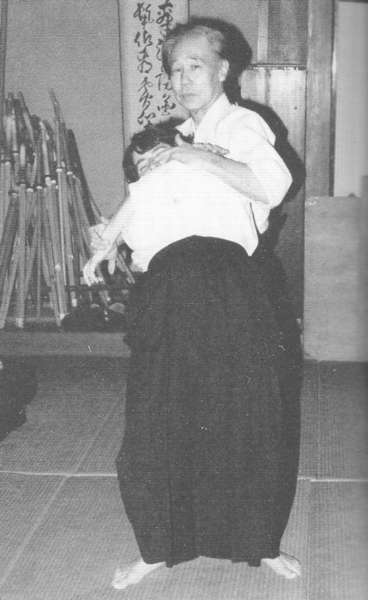
Kimura: Speaking of push-ups, in the past there was a time that I went to the dojo and Sagawa Sensei remarked “Yesterday there was a visitor and I couldn’t do them, so today I finally got caught up”. So, I asked him “How many did you do?” and he said “1300 times”.
Azumi: 1300 times! By the way, what year are we talking about?
Kimura: That was when Sensei was eighty-three years old.
Azumi: 1300 push-ups at the age of eighty-three! This is another one that nobody will believe. (embarrassed grin)
Sagawa Sohan’s “Frustration”, Sticky Aiki
Azumi: You’ve told me that Sagawa Sohan used his brother Hiroshi Sensei as a partner during his technical research, and you’ve said that Sagawa Sohan also used his wife as a partner during his research. Rather than being because she was the person closest to him, I have heard that this was because his purpose was to apply technique to female partners….If that is the case, then what was Sagawa Sohan’s goal?…I would really like to know.
Sagawa: Before talking about training partners, it’s Aiki.
Azumi: What do you mean?
Sagawa: Until that time my brother, no matter how much strength his partner used when grabbing his wrist, was able to use Aiki and raise his hands (and destabilize them). However, not allowing the partner grabbing his wrists to let go, in other words, making them stick to him, was not yet going well. Being sticky means doing it without grabbing the partners wrists. Leaving the hand grabbed by the partner as it is, and throwing. It’s simple to talk about, but this is extremely difficult. Normally they separate from you.
Azumi: I would think so.
Sagawa: For that reason, at the time my brother was bending all of his efforts into considering how to make it so that they could not let go. Well, he had that ferocious tenacity. Our father, who trained until he received his Kyoju Dairi (“Assistant Instructor” / 教授代理), said “It may be that this, at least, cannot be done by anybody other than Takeda Sensei”, but my brother said “No, Takeda Sensei was a human like me. If he could do it then there’s no way that I can’t!”.
Azumi: What a thing to say! Nobody other than Sagawa Sensei could say such a thing…
Sagawa: Thanks to that, we were told “Grab my wrists, grab”, he made us work with him until we were exhausted and fed up with it. (embarrassed grin) Just grabbing would have been okay, but each time we’d tumble over…that time was really exhausting. (laughing)
Azumi: That it was difficult has come across quite well. (laughing) But why did he choose a woman as a partner?
Sagawa: That, well that’s because women’s bodies are special.
Azumi: I see….?
Sagawa: What my brother said is that women’s bodies have a stickiness like mochi (“sticky rice cake” / 餅), and are convenient for training sticky Aiki.
Azumi: They’re convenient because they’re like mochi?
Sagawa: Because of their flexibility things like joint techniques are difficult to make effective. Further, with men their hands quickly let go, but women tend not to let go very much. For that reason, he carried that into his reasearch when considering how to best make it so that one’s partner cannot let go.
Azumi: Hmm…
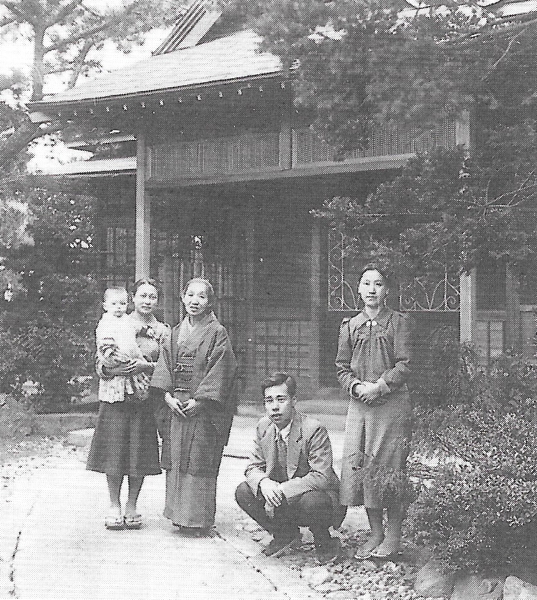 The Sagawa family at their house in Yubetsu, Hokkaido
The Sagawa family at their house in Yubetsu, Hokkaido
From right: wife Michiko, Sagawa Sohan, mother
Sagawa: So my brother used his wife (Sagawa Sohan’s wife Michiko) as a training partner. My sister, who was five years older than me (Editor: Tama-san, who passed away last year), was also used as a training partner.
One More Brother
Azumi: What time period are we discussing?
Sagawa: It was when I was in my late teens, so my brother would have been in his late twenties (Note: they were born seven years apart) to his early thirties. Because when I was around twenty years old there was already nobody who could be a partner for my brother.
Azumi: During that time Sagawa Sohan had returned from Tokyo to Hokkaido, and Hiroshi Sensei had graduated from Hokudai (Hokkaido University) and had gone to attend Waseda University.
Sagawa: I had another brother, but he was fourteen or fifteen years younger than my older brother so his didn’t have a close a relationship with him as I did.
Azumi: So Sagawa Sohan had one more younger brother?
Sagawa: He was named Masataka Sagawa (佐川正隆). He didn’t appear in Kimura-san’s book (“Transparent Power“), so you may not know of him. He is already eighty-three or eighty-four years old. Nowadays he’s moved to Yokohama, before that he was employed by Mitsubishi Heavy Industries (三菱重工).
Azumi: As Sokaku Sensei’s unknown son (Takemune / 武宗) was just like Takeda Sensei, was was he just like Sagawa Sohan?
Sagawa: His temperament and everything else were the complete opposite of my brother’s.
Azumi: Ah, is that so?
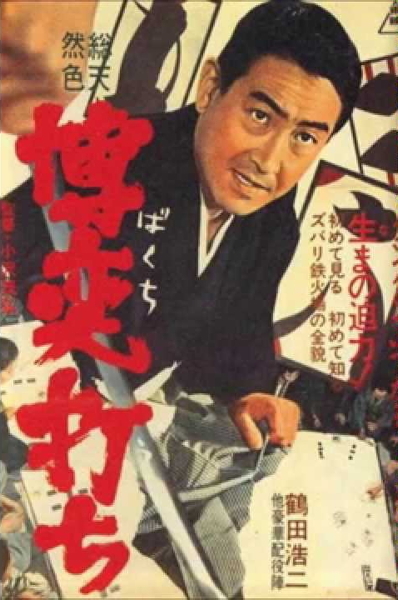 Actor and Singer Koji Tsuruta (鶴田浩二)
Actor and Singer Koji Tsuruta (鶴田浩二)
“Bakuchi Uchi” (“Gambling House” / 博奕打ち) – Toei Films, 1968
Sagawa: This youngest child loved company and got along well with me. I often took him to movies and had a soft spot for him. He was tall, and manly. Enough so that people often said that he resembled Koji Tsuruta. (laughing)
Azumi: Koji Tsuruta! With Sagawa Sohan and Hiroshi Sensei, the Sagawa brother’s are really handsome, aren’t they? No, really.
The Difficulty with Transmitting Aiki, the Impossibility of Spreading Aiki
Azumi: How do you think that Aiki can be transmitted and spread in the future?
Kimura: There is no way that Aiki can be spread. That is, even if one writes books or shows it on videos, it all must look like a lie, doesn’t it? After Sagawa Sensei passed away, a film production company approached me about putting out a video, so I said that they should first try receiving the techniques, and threw them softly a number of times. When I did that the person said “Even if we film this, nobody watching will believe it, will they? One has to actually have it done to them to understand…” – so they understood and left.
Azumi: They understood after having it done to them a number of times.
Kimura: That’s right, one must experience it. However, one cannot understand with just one or two times. One experiences it over and over, and then with great effort one understands at last – it is a matter of that kind of perspective. After all, there is a limit to what I can teach over the span of a lifetime. For that reason, if one tries to transmit this (Aiki) widely it would be impossible without the Kata or Kata training method of other Budo, in which they apply techniques on each other cooperatively. However, once one does that it disappears. In order to transmit the true thing there are some things that are impossible by just showing a model and saying “OK, now do it!”.
Azumi: Some things are impossible…?
Kimura: At the very least, the transmission of Aiki would be absolutely impossible. Because receiving direct instruction is an absolute requirement. So, inside of me I think that is impossible, that it can only be done with those that encounter it by fate, this is what I feel. Speaking honestly. (laughing)
Azumi: Really. You don’t see any hopeful signs when you are teaching?
Kimura: Especially now, because my work at the university is so busy. Ten years from now after I retire I might open a small dojo, though. And yet, even now I am letting people looking for the real thing experience it. Sagawa Sensei and Takeda Sensei were this way, so I am doing the same. It’s not good without being able to actually show the techniques (with just lip service). With Takeda Sensei, and with me, whoever the opponent is, when they come I do it right away (partner with them and throw them). That’s the way it is. That’s important. Sagawa Sensei often told me “Those guys who just talk, even though they can’t do that, are useless”. For that reason, in the same way I handle whoever comes with that same feeling. (laughing)
Azumi: But even if you say that you are doing the same as Sagawa Sensei, isn’t it actually difficult?
Kimura: There was a giant that I met in Germany, at first no matter what I did they were as steady as a rock, but after deepening my research for five years I got to a point at which I could always topple him. It seems to have shocked him, though…
Azumi: …..
Kimura: But if, by any chance, there is a person on whom my technique were ineffective then I suppose that I would have to innovate and research from that point again in order to progress. Human beings, when they are protected they stop progressing. That position is unacceptable.
Azumi: Sagawa Sensei also left some similar sayings, didn’t he?
Kimura: That’s right. Sagawa Sensei would never say that this is good enough, that he was satisfied with where he was. He would say things like “There is no such thing as perfection! When one thinks that their progress stops right there.” and “No matter how high a level one has reached, if one thinks that they have progressed enough then there is no value right from that point!”.
Azumi: Furthermore, he put that into practice, didn’t he…? There is much more that I would like to talk about, but unfortunately our time has run out. Thank you for taking so much time to speak with me today.
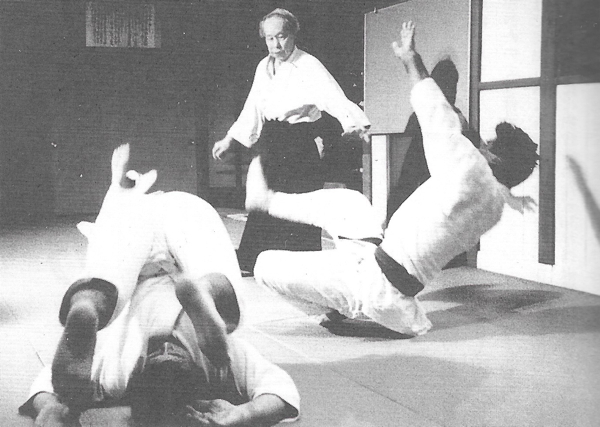
Published by: Christopher Li – Honolulu, HI

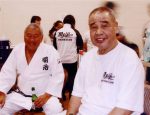


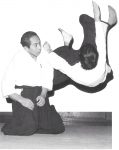
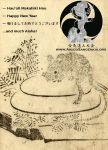
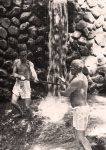
Leave a Reply